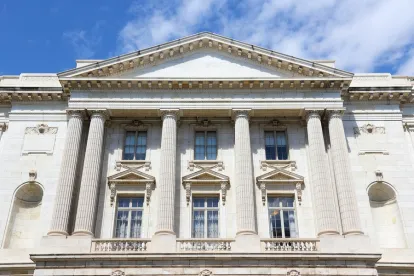In the wake of the tragic death of architect Tishman in December 2019, who was killed by falling debris from a brick tower in Midtown, the New York Department of Buildings (DOB) amended its rules governing exterior wall inspections and repairs. The new rules went into effect on February 20, 2020. Known as the Local Law 11 inspections, the Façade Inspection & Safety Program (FISP) has undergone extensive amendments in an effort to address the increasing number of dangerous façade conditions including corroded masonry and fractured terra cotta which in addition to causing structural problems, can loosen and fall to the ground causing bodily harm or property damage.
This issue is a growing concern. During the past six years, more than 4,790 Environmental Control Board violations related to facades were issued of which more than half remain active.[i] The DOB reported more than 22,000 violations since 2014 related to facades.[ii]
In December 2019, the DOB reported that during a surprise safety sweep of 1,331 facades previously deemed unsafe, 220 required additional pedestrian protections, yet as of January 27, 2020, only 68 owners subsequently installed required protections. As a result, under the new laws, the DOB is sending contractors at the owners’ expense to correct the remaining 152 unsafe properties.[iii]
Currently 3,092 sidewalk sheds[iv] which stretch for more than 81 miles[v] are in place throughout the city due to unsafe conditions or ongoing façade maintenance. While this number is large, keep in mind that not all areas that require sheds have installed them. Further, the length of time the sheds remain in place exemplifies the slow pace of remediation by owners. For example, sheds are in place an average of 362 days and there are currently more than 570 sheds greater than 3 years old. [vi] In fact in the Bronx, a certain building was inspected 19 years ago, and first reported that the façade of the building was crumbling and the corner was separating. A childhood day care center which was located in the building, had to immediately close down the playground which remains closed today. In November 2019, another inspector cited the same problem “SUBSTANTIAL VERTICAL CRACKS” and fined the building owner $6,250. At this location, scaffolding has been in place for more than eight years. The building’s owner has ignored at least 19 violations, failed to pay $49,000 in fines and has failed to appear at seven hearings regarding the dangerous conditions.[vii]
The City hopes that by imposing higher fines for business owners, requiring more experienced inspectors and higher quality inspections and reporting building owners will start correcting these dangerous conditions.
Several of the significant amendments are summarized below[viii]:
-
Facades deemed unsafe by inspectors must be repaired in 60 days.
-
Failure to timely repair will result in fines up to $1,000 per month as well as charges of $10 per foot of sidewalk shed erected in front of the building.
-
Sidewalk shed fees will increase yearly up to $40 per linear foot after five years.
-
Inspections and inspection reports must now be conducted by engineers or architects who have seven years of experience working with buildings six stories or taller.
-
Inspectors must conduct a close-up façade inspection every 60 feet on any part of a building’s exterior that faces a public area, such as a public street, avenue, sidewalk or other public way. Close up inspections require suspending scaffolding from the roof or hoisting inspectors by motorized lift rather than observations from the street.
-
Inspectors are now required to conduct more cavity inspections within facades and submit more photographs with each inspection report.
-
The penalty for landlords who miss the deadline for filing a 5-year inspection report has increased from $2,000 to $5,000.
-
Building owners must now post and maintain the building façade status in the lobby of its building.
In addition to the new rules, the DOB has doubled its existing façade inspection team by hiring an additional 11 inspectors (as well as 12 additional staff members) to facilitate more frequent, thorough, and proactive inspections. Additionally, DOB inspectors will conduct follow-up field inspections 90 days after the issuance of an initial Class 1 façade violation to ensure that required changes are being implemented. The DOB is also considering the use of aerial drone inspections and thermal imaging cameras to assist the inspectors.[ix]
It is with hope that the new rules can modify the complacency of many buildings owners to make critically needed changes. By repairing dangerous conditions, not only will the owners maintain public safety, but the removal of the sheds throughout the City will be a welcome change to the landscape.
[i] TRD NY Dec. 18, 2019 “After Fatality, analysis shows facade rules widely ignored across city.”
[ii] TRD NY Dec. 18, 2019 “After Fatality, analysis shows facade rules widely ignored across city.”
[iii] TRD NY January 27, 2020 “After façade deaths, city considers using drones for building inspections.”
[iv] TRD NY Dec. 18, 2019 “After Fatality, analysis shows facade rules widely ignored across city.”
[v] Facades on 1400 Buildings in NY are a Threat to Pedestrians, January 30, 2020.
[vi] TRD NY Dec. 18, 2019 “After Fatality, analysis shows facade rules widely ignored across city.”
[vii] Facades on 1400 Buildings in NY are a Threat to Pedestrians, January 30, 2020.
[viii] https://www1.nyc.gov/assets/buildings/rules/1_RCNY_103-04_prom_details_date.pdf
[ix] DOB Announced Strengthened Façade Inspection Process & Hiring of Double the Amount of Façade Inspectors, Press Release DOB – December 30, 2019



 />i
/>i

